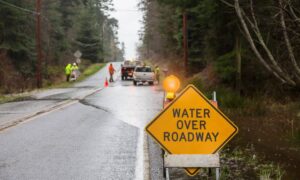
In Fort Worth TX, access and right-of-way issues are a major concern for property developers, owners, and legal teams. When a project moves forward without verified access details, it can face setbacks, redesigns, or even legal disputes. ALTA survey helps reduce these risks.
Existing Access Conflicts in Fort Worth’s Commercial Growth Zones
In busy corridors and redevelopment areas, properties often share driveways or depend on access through neighboring lots. Some parcels were divided decades ago, creating situations where entry points are no longer clearly defined or legally documented.
Disputes arise when two or more owners claim the same path, or when a developer assumes a route is available without legal proof. Without a verified survey, mistakes can lead to blocked access, legal claims, or rejected permit applications.
As commercial development expands in Fort Worth, many parcels are located in areas with limited frontage or shared use. Problems often appear when:
- Properties rely on driveways that cross neighboring lots
- Legal access is not clearly recorded in the title
- Shared use agreements are missing or expired
These conflicts can delay permits or financing. An ALTA survey helps resolve them early.
Role of ALTA Surveys in Verifying Legal Entry Points
An ALTA survey shows how people and vehicles are legally allowed to enter and exit a property. This includes:
- Documented easements and rights-of-way
- Access points shown in legal records
- Paths that appear physically but are not legally valid
By reviewing this data before planning begins, teams can avoid relying on informal or assumed access points.
The survey also reveals if easements exist, where they are located, and whether they are properly maintained. In many cases, it uncovers outdated or missing agreements that should be addressed before development moves forward.
Identifying Shared Routes and Cross-Parcel Dependencies
In areas with closely spaced buildings or narrow frontage, access is often shared between properties. A path may physically connect several parcels, but that doesn’t mean each party has legal access to use it.
ALTA surveys help clarify which parcels have recorded rights to shared routes. They also distinguish between physical access (what’s visible on-site) and legal access (what’s recognized in documents). When multiple stakeholders are involved, this level of clarity is critical for avoiding disputes and planning future use.
Using Surveys to Resolve Right-of-Way Location Conflicts
Right-of-way disputes can stop a project or require costly revisions. These often involve building near utility corridors, public easements, or undocumented routes. That’s why developers benefit from right-of-way documentation that clearly maps access zones and legal boundaries.
An ALTA survey helps prevent these problems by:
- Mapping the boundaries of public and private rights-of-way
- Showing buffer areas that must be kept clear
- Helping teams avoid placing structures in protected zones
Risk Reduction for Buyers, Lenders, and Developers
Legal access and right-of-way issues create risk for everyone involved in a real estate transaction. Buyers may inherit unresolved problems. Lenders may delay funding if access is unclear. Developers may be forced to redesign a site after construction starts.
By using an ALTA survey early in the process, these risks are reduced. The survey confirms the true legal status of access points and right-of-way use, supporting informed decisions during planning and purchase.
Access disputes are more than just design problems; they can affect financing and ownership. When boundaries and access rights are not clear:
- Lenders may delay or deny funding
- Title insurers may not cover the property
- Owners may face legal claims from neighbors or the city
With an ALTA survey, these risks are reduced. The survey provides verified information for secure investment and development.
Data Integration Between Legal, Planning, and Design Teams
Survey results are useful to more than one team. When shared early, they help:
- Legal teams confirm title and easement records
- Designers avoid layout conflicts
- City planners speed up the review process
This coordination prevents misunderstandings and supports better outcomes.
Real-World Scenarios Where ALTA Data Resolves Access Barriers
In Fort Worth, ALTA surveys are especially useful in:
- Corner properties with unclear entry routes
- Commercial back-lot spaces with shared drives
- Projects along alleys or easements with missing records
In each case, the survey gives teams the data needed to move forward confidently.
FAQs
1. What problems can an ALTA survey help solve?
It helps avoid access disputes, layout errors, and right-of-way violations.
2. How does it show legal access?
The survey includes title-documented easements and entry rights.
3. Who uses this data during development?
Architects, engineers, legal teams, title companies, and planning officials.
4. Why is this important in Fort Worth?
The city has dense and growing areas where access is often shared or unclear.
5. Can a project start without an ALTA survey?
Yes, but doing so increases the chance of costly delays or redesigns.





